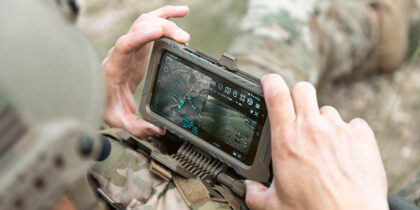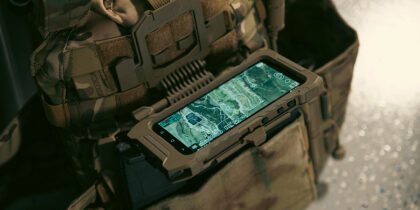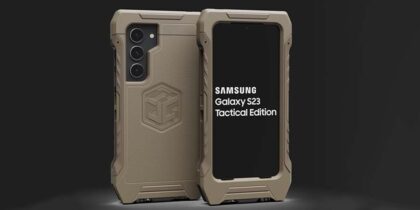Last year, former Defense Secretary Jim Mattis ordered the U.S. Air Force and Navy to increase overall readiness and mission capable rates to over 80 percent by this September, according to Defense News. This was in direct response to the F-22 and F-35 aircraft hovering at or below 50 percent mission capable rates, as reported in Air Force Magazine — a deficit that Breaking Defense reported current Defense Secretary Mark Esper is aggressively working to solve today.
This readiness challenge is just one of many the Department of Defense (DoD) faces when preparing for a new era of warfare where command and control, data intelligence tools, logistics and other operational elements need to be aligned in real time. These challenges are not exclusive to the military; many of these needs also translate directly to civilian agencies and other large enterprises beyond the federal government that must likewise prepare pilots, crews and fleets to meet both business and mission needs — whether fighting forest fires, shipping mail, surveying fields or transporting prisoners.
Mobility can be a game-changer for ensuring aviation readiness. Mission-ready tablet solutions, including the Galaxy Tab Active2, Galaxy Tab S4 and Galaxy Tab A, are helping agencies accelerate IT transformation by delivering advanced capabilities that seamlessly interoperate with enterprise networks and applications to support everything from paperless flight line maintenance to tactical communications, battlefield coordination and geospatial awareness. Operationally ready off-the-shelf and protected by Samsung Knox defense-grade security, Samsung tablets can be customized for diverse uses cases.
1. Reduce the Load and Save Costs
Years ago, aircrews transitioned from heavy and cumbersome paper-based flight bags to electronic flight bag (EFB) and Electronic Kneeboard (EKB) solutions that have eliminated the need to produce and ship hundreds of paper approach plates, pilot operation handbook pages and procedures manuals.
Enhance Aviation Mission Readiness With Mobile Technology
Get your free guide to powering more intelligent aviation missions using mission-ready Samsung tablets. Download Now
Since then, feature-rich mobile solutions like Samsung Galaxy tablets have emerged that provide optimal EKB solution support. Outfitted with applications, mounts and docking stations, tablets allow aircrews to easily connect directly to aircraft systems to improve the immediacy of mission-critical information, while benefiting from a compact form factor that minimizes onboard weight to save fuel costs.
2. Optimize Flight Line Operations
Commercial airlines have employed condition-based maintenance (CBM) for nearly a decade. Now, the U.S. Air Force and DoD are evolving some of those best practices into their own Condition Based Maintenance Plus (CBM+) approach. This strategy maximizes systems and component life cycle by applying and integrating “processes, technologies and knowledge-based capabilities” designed to keep DoD costs down and equipment more available, reliable and operational, according to the Office of the Assistant Secretary of Defense for Sustainment.
Tablet solutions like the Tab Active2, available via the Air Force Quarterly Enterprise Buy (QEB) contract, are ideally suited for key components of this approach, including flight line maintenance. Tablets can support applications like eTools that are designed to increase overall training and repair efficiency through optimized checklists, safety inspections, spare parts logistics information and more.
3. Gain Strategic Advantage With Situational Awareness
Mobile solutions such as ruggedized tablets provide reliable access to command and control data via voice, video and data feeds in degraded battlefield environments to ensure targeting accuracy, confirm friendly and enemy troop locations, and achieve an accurate common operational picture. On top of being quick to deploy, easy to manage and certified to meet stringent DoD and federal security requirements, ruggedized tablet solutions leverage real-time data streams and tactical apps such as the Android Tactical Assault Kit (ATAK).
The United States Marines Corps (USMC), for example, is using tablets to make calling for support easier, quicker and more accurate. Using a Tab Active2, the USMC Target Handoff System (THS) modular and portable equipment suite securely communicates with military radios and peripherals using the Navy’s Kinetic Integrated Low-Cost Software Integrated Tactical Combat Handheld (KILSWITCH) application. This capability provides dismounted Marines with the ability to quickly and accurately locate targets, pinpoint global positioning coordinates and call for close air, artillery and naval fire support.
4. Increase Supply Chain Visibility and Control
DoD manages a supply chain of 4.9 million secondary inventory items worth a reported $91.7 billion, according to the U.S. Government Accountability Office. Preventing logistics breakdowns and eliminating inefficiencies can have a massive impact on mission safety and cost. That’s why agencies like the Air Force and Defense Logistics Agency, for example, are also looking at new ways to enhance supply chain operations, according to Federal News Network.
Using mobile devices, like a tablet that can integrate with peripherals such as barcode scanners, agencies can gain immediate supply chain visibility and control of logistics, sustainment, operational and material readiness to better manage inventory levels and reduce equipment and system expenses.
5. Enhance Recruiting to Ensure Force Readiness
Recruiting commands are under pressure to expand their geographic outreach while adding hundreds of recruiters to ensure future force readiness. Tablets arm recruiters with the modern tools they need to attract and engage with the right talent, electronically collect applicant data, track and compare applicants, and connect with central human resources systems.
For example, the Marine Corps Recruiting Command (MCRC) developed the Marine Corps Recruiting Information Support System II (MCRISS II), a set of modernized tools and technologies to aid the recruitment force, according to SIGNAL Magazine. This effort includes a mobile version that recruiters could use on tablets to track an applicant from their first meeting to the completion of boot camp to ensure they can attract and retain the next generation of airmen.
Learn how to enhance aviation mission readiness from the flight line to the front line with Samsung’s mission-ready tablets. Mobile solutions are even taking military health outcomes to the next level.







